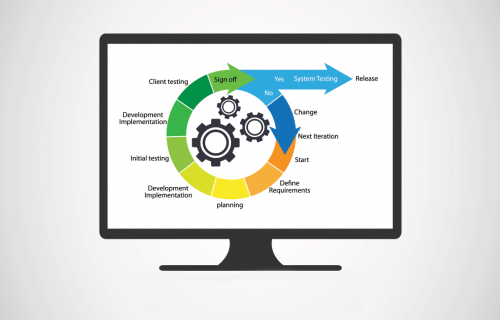Asset Optimizer™ is a unique software that provides rich analytics and optimization capabilities tailored to meet the needs of infrastructure asset owners and operators. The software implements the industry’s most advanced algorithms to support optimal network-level long-term cross-asset renewal planning. The algorithms include inductive multi-variate deterioration modeling, quantitative and dynamic risk assessment and asset prioritization, and multi-objective optimization. Asset Optimizer™ offers a rich feature set unparalleled by any other software in the market today.

Comprehensive Asset Data Repository
Asset Optimizer™ maintains a centralized high-performance data repository that stores asset data for the entire network. Asset Optimizer™ offers a rich set of advanced analytics features that leverages the rich asset data to provide asset managers with unique capabilities and deeper understanding of asset performance and historical patterns. The software provides advanced data management services such as data security, access control, and replication, and supports import/export functions from/to virtually all commonly used formats
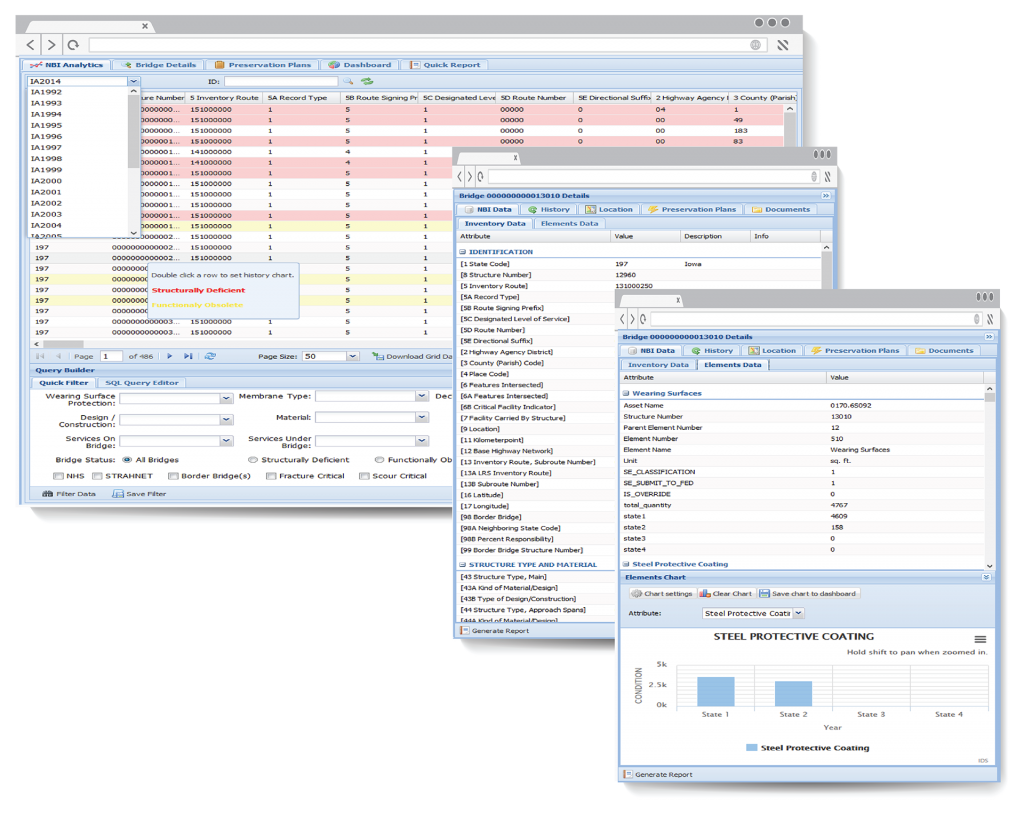

Cloud-Based SaaS Application
Asset Optimizer™ Software as a Service (SaaS) application offers asset managers access to comprehensive analytics functions, reports, maps, dashboards, preservation plans, and documents. IDS offers flexible licensing and pricing options subscription plans for Asset Optimizer’s high-performance high-availability and secure cloud services that can be accessed anytime from anywhere using a web browser.


Advanced Data Analytics & Dashboards
Asset Optimizer™ database can be efficiently queried using a user-friendly Query Builder. Asset groups can be easily created, stored, and analyzed. Asset managers can use context-rich charting functions (boxplots, scatter plots, histograms, and pie charts) to efficiently investigate relationships and historical patterns embedded in the database. Queries and charts can be created for individual assets, group of assets, or the entire inventory. Historical data trends can be identified using linear, polynomial, or exponential curve fitting functions. Dashboards can be used to share collections of important charts and tables created by the analytics functions.
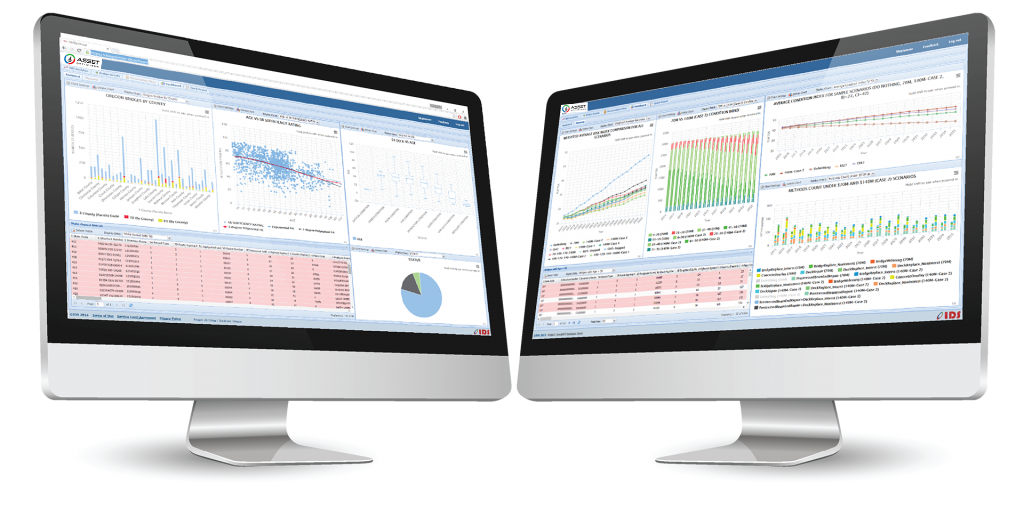

Geospatial Data Integration
Asset Optimizer™ integrates ArcGIS to enable users to easily create, analyze, and share map layers . Users can directly access Google StreetView for any location on the map.
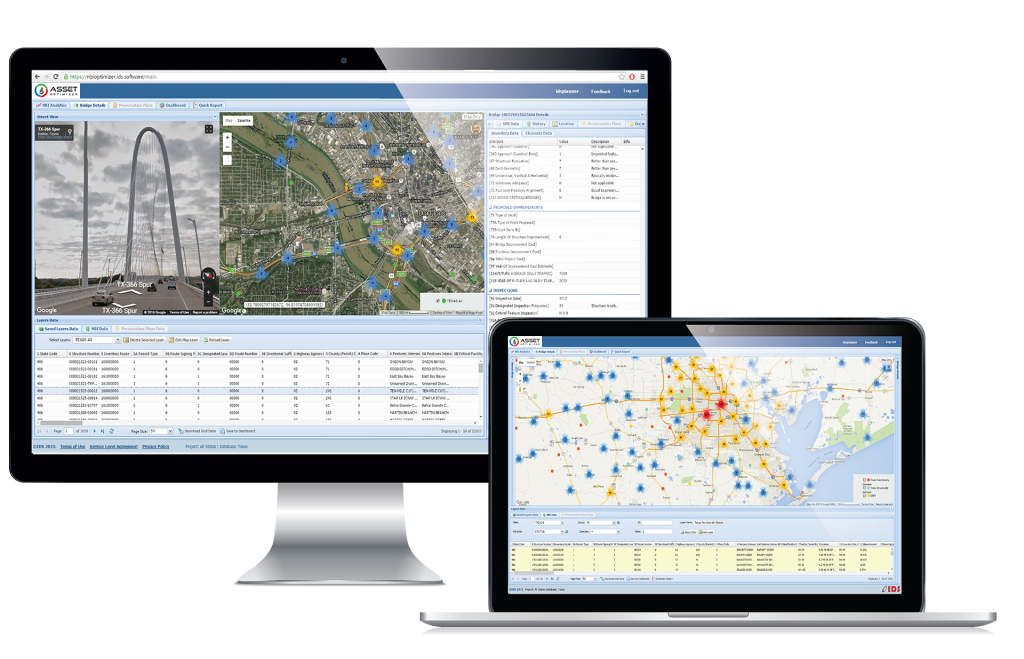

Asset Reports & Document Management
Asset managers can easily search for assets based on any attribute and download current or past reports on any asset. Documents related to any asset can also be linked to the database and managed by Asset Optimizer™. Alternatively, a link between Asset Optimizer™ and organization’s document management system can be established. Users can easily upload, download, delete, and view any asset-related document such as inspection reports, spreadsheets, DGN/DWG drawings, photos, etc.


Optimized Plans & Detailed Trade-off Analysis
Asset Optimizer™ allows users to investigate a range of planning scenarios, including: (1) scenarios to evaluate the impact of funding levels on system-level condition and risk measures; and (2) scenarios to evaluate funding requirements to achieve desired condition/risk objectives. For each scenario, Asset Optimizer™ generates optimal and feasible project lists, on annual basis. Selected projects satisfy all defined constraints and are guaranteed to be optimal. Asset Optimizer™ also maintains a comprehensive database of intervention methods, and a set of defined constraints and formulae for calculating costs and benefits. Trade-off analysis of various scenarios provides engineers with rich analytics tools (e.g., queries, charting functions, etc.) to quantitatively assess the consequences of various strategies and scenarios on the condition and risk levels of the assets.


Multi-Variate Inductive Deterioration Modeling
Asset Optimizer™ implements a revolutionary multi-variate inductive algorithm based on statistical learning theory and supervised learning techniques to predict future condition states of asset elements and accurately represent the stochastic nature of the deterioration process. Unlike other approaches (such as Markov chain, survival analysis, or regression models) which assume that the deterioration process follows a “known” distribution function, our inductive algorithm does not assume any “prior” knowledge of the deterioration function and can efficiently account for the impact of a wide range parameters. Our deterioration modeling algorithm analyzes historical inspection data and correlates a range of independent physical and operational variables (e.g., age, traffic volume, design load, deck type, etc.) with condition and capacity degradation of asset elements to automatically “infer” (or “learn”) the distribution function that most closely captures the relationship between these variables and the condition state of asset elements.


Risk-Based Prioritization
Asset Optimizer™ implements a unique risk-based prioritization algorithm that balances the need to address condition degradation of asset elements (or likelihood of failure) and the consequence of failure (or criticality) by ranking assets based on their potential “risk.” Risk is assessed to reflect asset structural or functional inadequacy to meet desired performance levels. For each asset, a “risk index” is calculated as the product of the consequence of failure and the likelihood of failure. Forecasted condition ratings are used as a proxy for the likelihood of failure. Consequence of failure is determined by evaluating a set of rules and weights that involve static or time-dependent risk factors (e.g., functional class, traffic volume, detour length, etc.). Calculated risk indices are then used to prioritize assets to reflect urgency of preservation actions. Thresholds of the risk indices are used to indicate “relative” priority of assets.
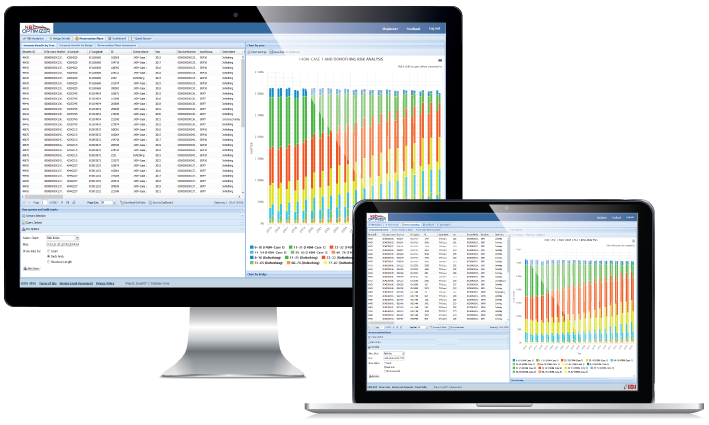

Customizable
Asset Optimizer™ can be easily customized to reflect organizational practices and policies, constraints, and objectives. Asset Optimizer™ can easily exchange data with other software, including most commonly used work management systems (e.g., Oracle WAM, CityWorks), GIS (e.g., ArcGIS, Geomedia), asset inspection systems, or document management systems.
